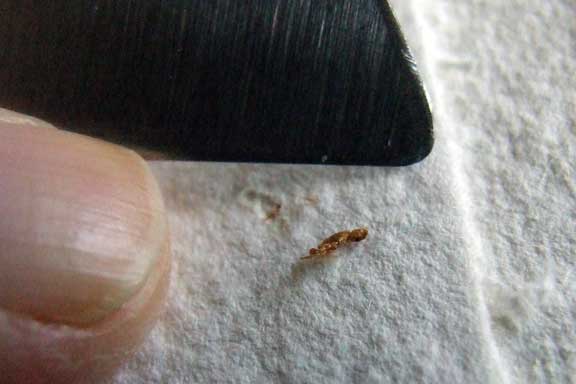
A sheet of 320gsm 'rough' paper.
The deckle edges are not noticeably distracting
People new to using handmade papers may need to be warned about some of the small things that could be a problem, depending on their needs. For most users the advantages of handmade paper far outweigh these matters. It is important for intending buyers to be aware of what might be a disappointing purchase. A good sales assistant ~ if time is available ~ may point this out. Here are some recent observations by way of reminders.
Handmade papers do not have a grain. One of the skills of a good paper maker is to jumble the fibres into a good tangle so that there is an even non-directionality everywhere.
Handmade papers have widely variable surfaces. The drying procedure involves gently laying soggy fibres between cloths or blankets to allow excess water to drain away. These blankets can be smooth or rough ~ leaving their surface pattern embossed on the paper. This may also vary between makings and between manufacturer. Consistency depends on the skill of the papermaker and the traditional style of the type of paper being made ~ artists tend to stay with the brand that suits their technique.
Not to be confused with 'largeness' of the sheet. Very important for watercolourists. Size ~ gelatin ~ or proprietary chemicals ~ can be applied to the slurry mix and also to the final surface ~ or both.
Precise sizing of the sheets is a slight problem. Making handmade paper involves pouring fibre slurry into a mould from which the water drains, leaving the mass of fibres which make the paper [113003]. The mould usually has wooden edges, and as the moisture drains away, and then starts to dry, so there is shrinkage away from the edges. This shrinkage is not always as even as some people might wish. There are small wrinkles ~ or ridges ~ or bumps ~ or waves giving ~ amongst other things ~ the main characteristic of handmade paper ~ the deckle edge.

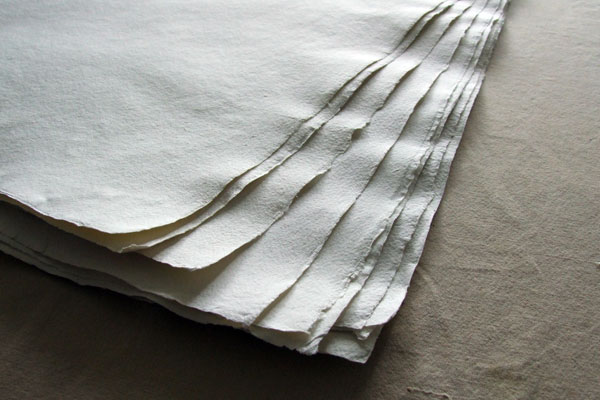
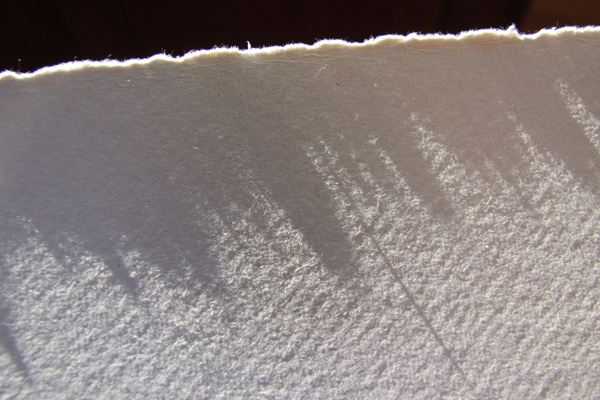
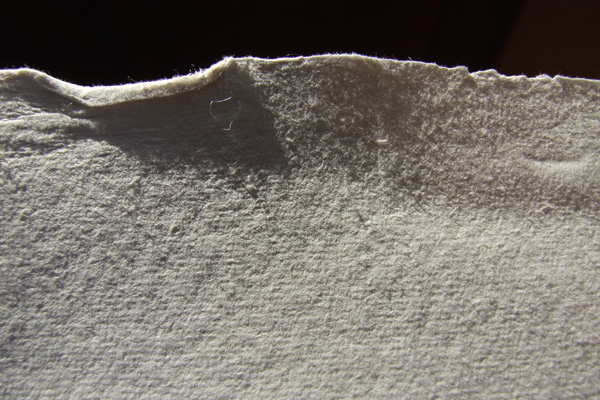
Sometimes the shrinkage is uneven along the length of the sheet ~ leading to a shape which is not perfectly rectangular. Possibly this sheet is slightly thicker towards one end?

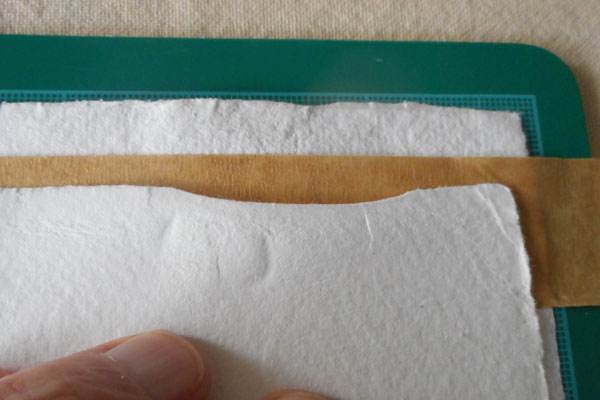
The picture above shows two glitches. The large scoop is a result of making a small fold in the wet paper as it is being hung up to dry. This would be noticed except that a scrap of clean paper is wrapped over the paper ~ at which point the crease is concealed. As the paper dries the crease becomes fairly permanent. To the left of the scoop is the very faint outline of the grippers of the peg ~ roughly of an oval shape.
